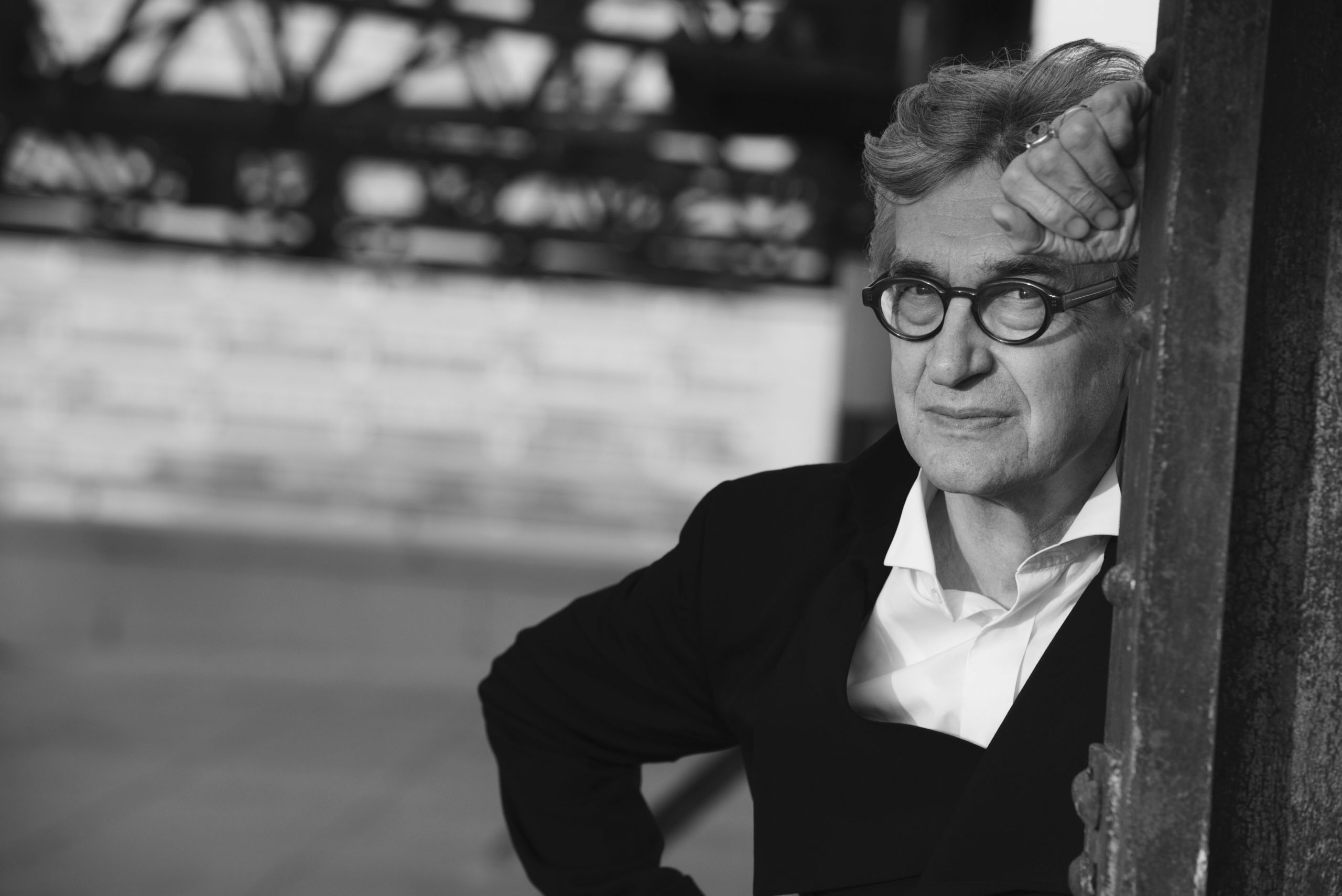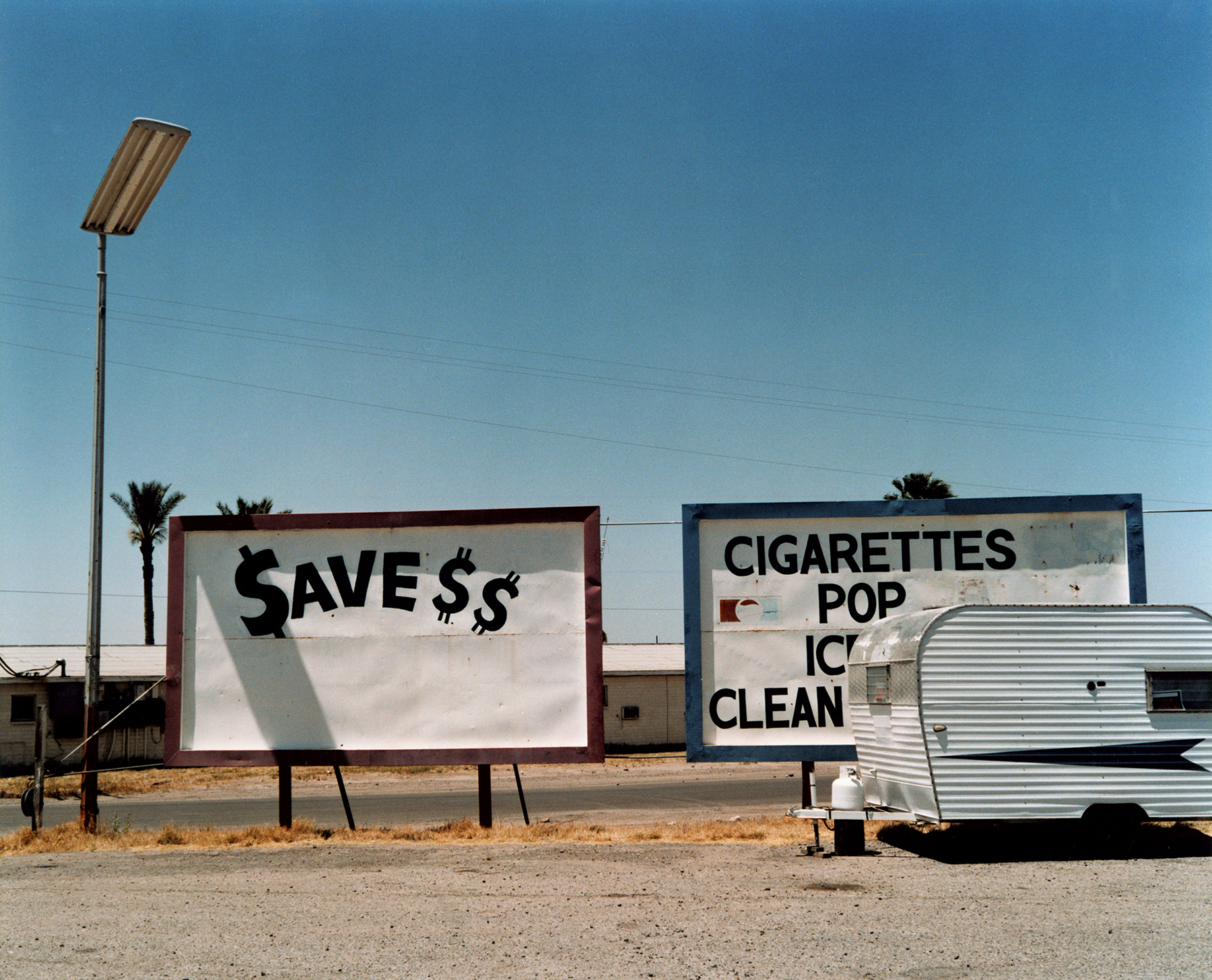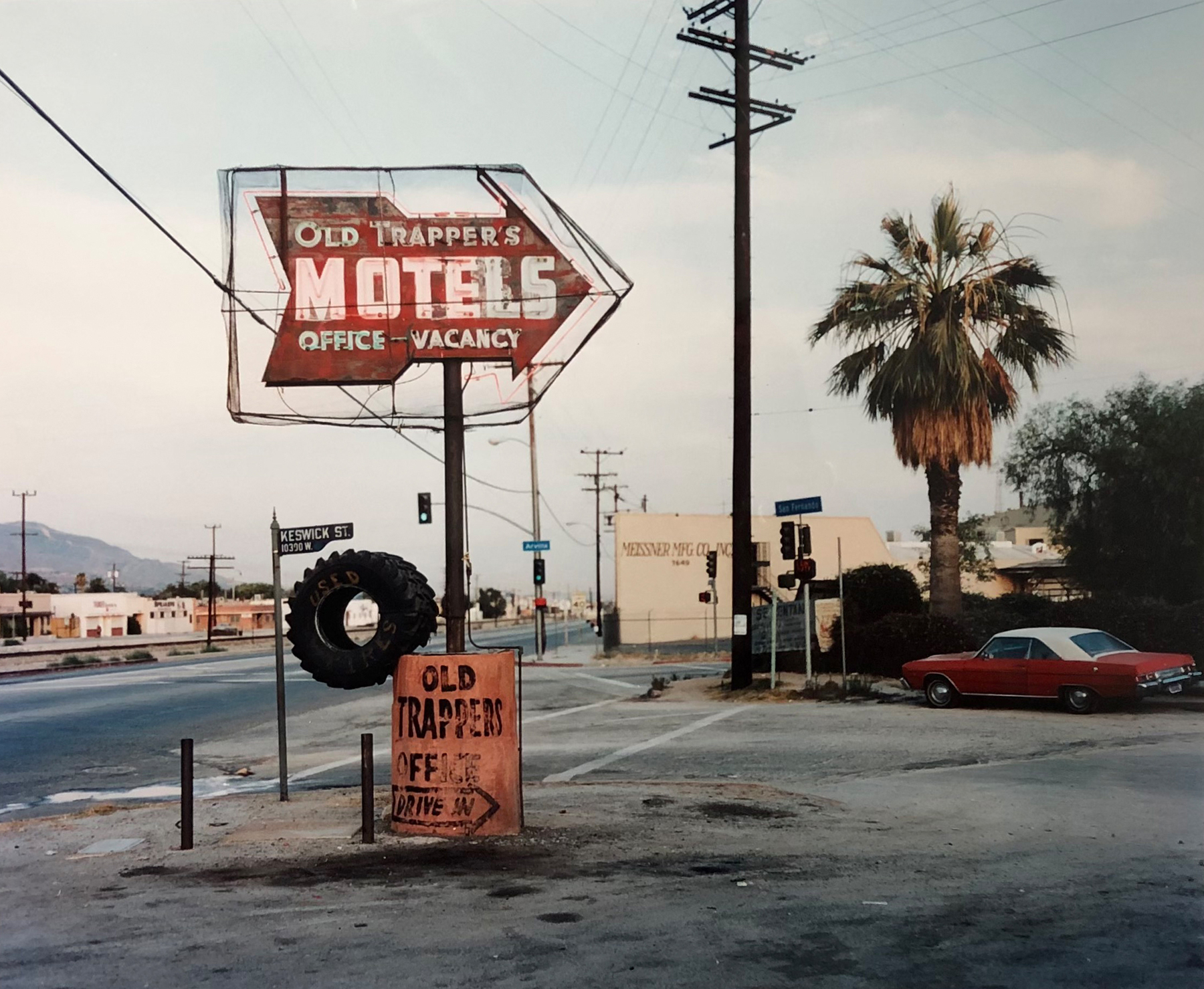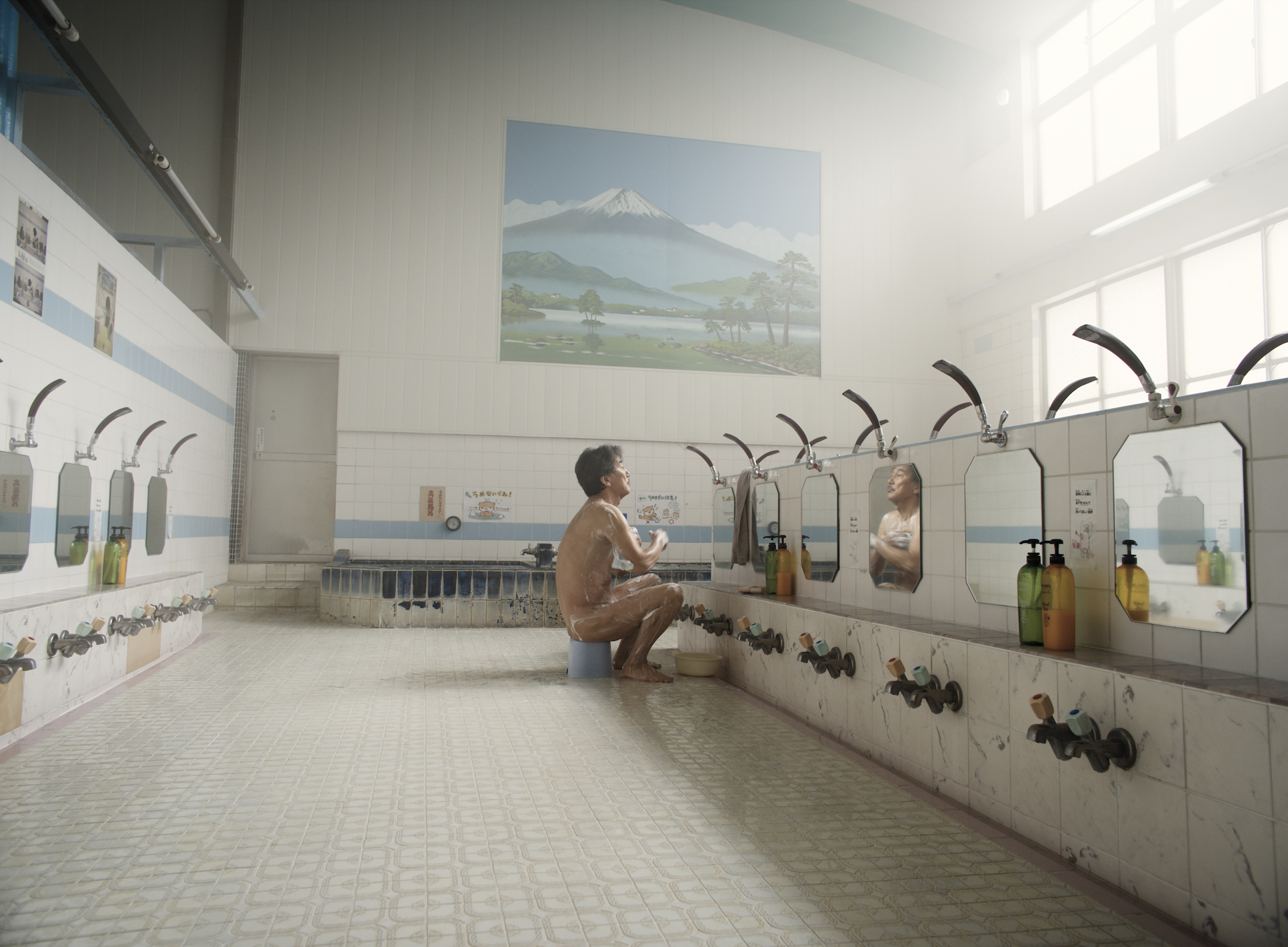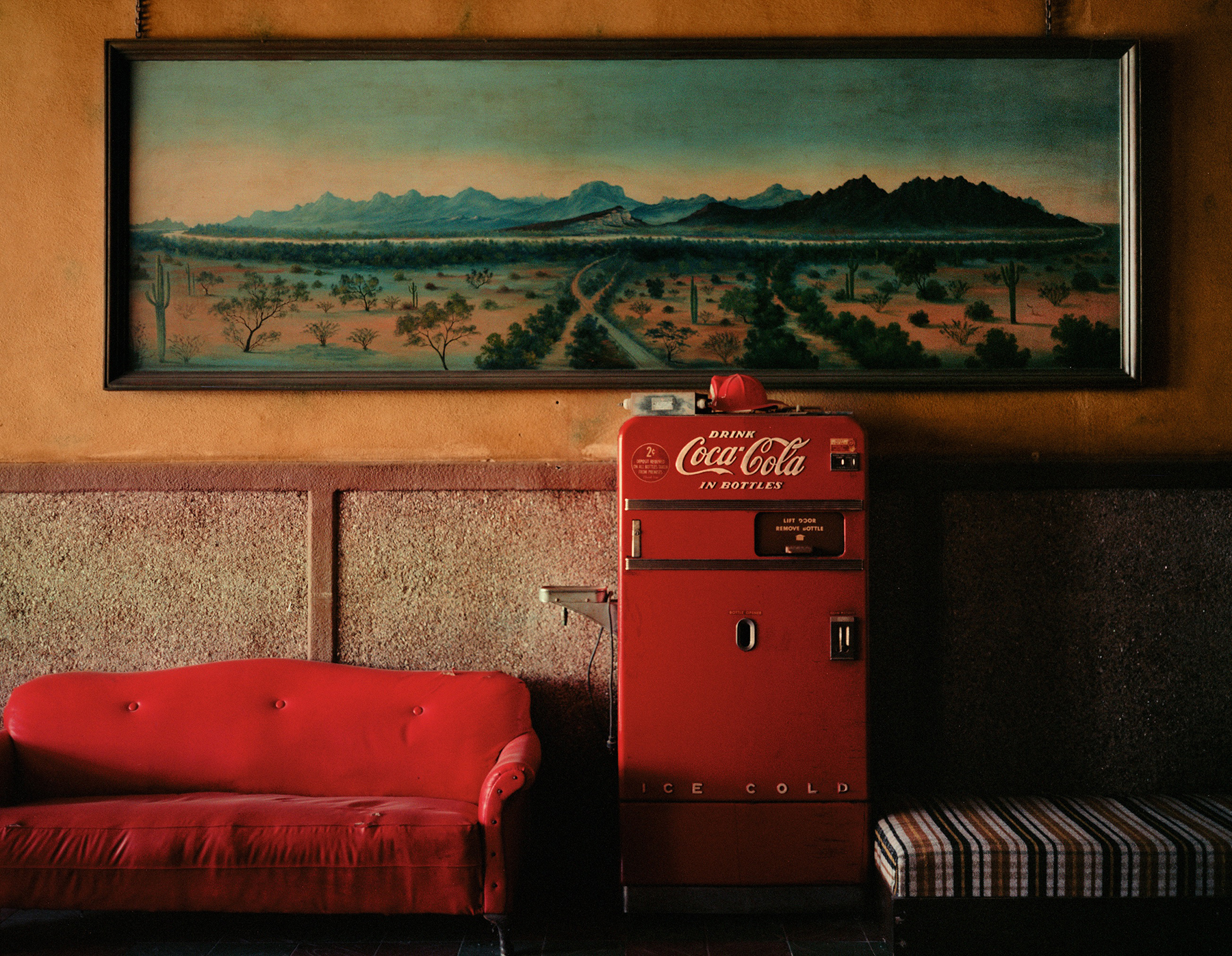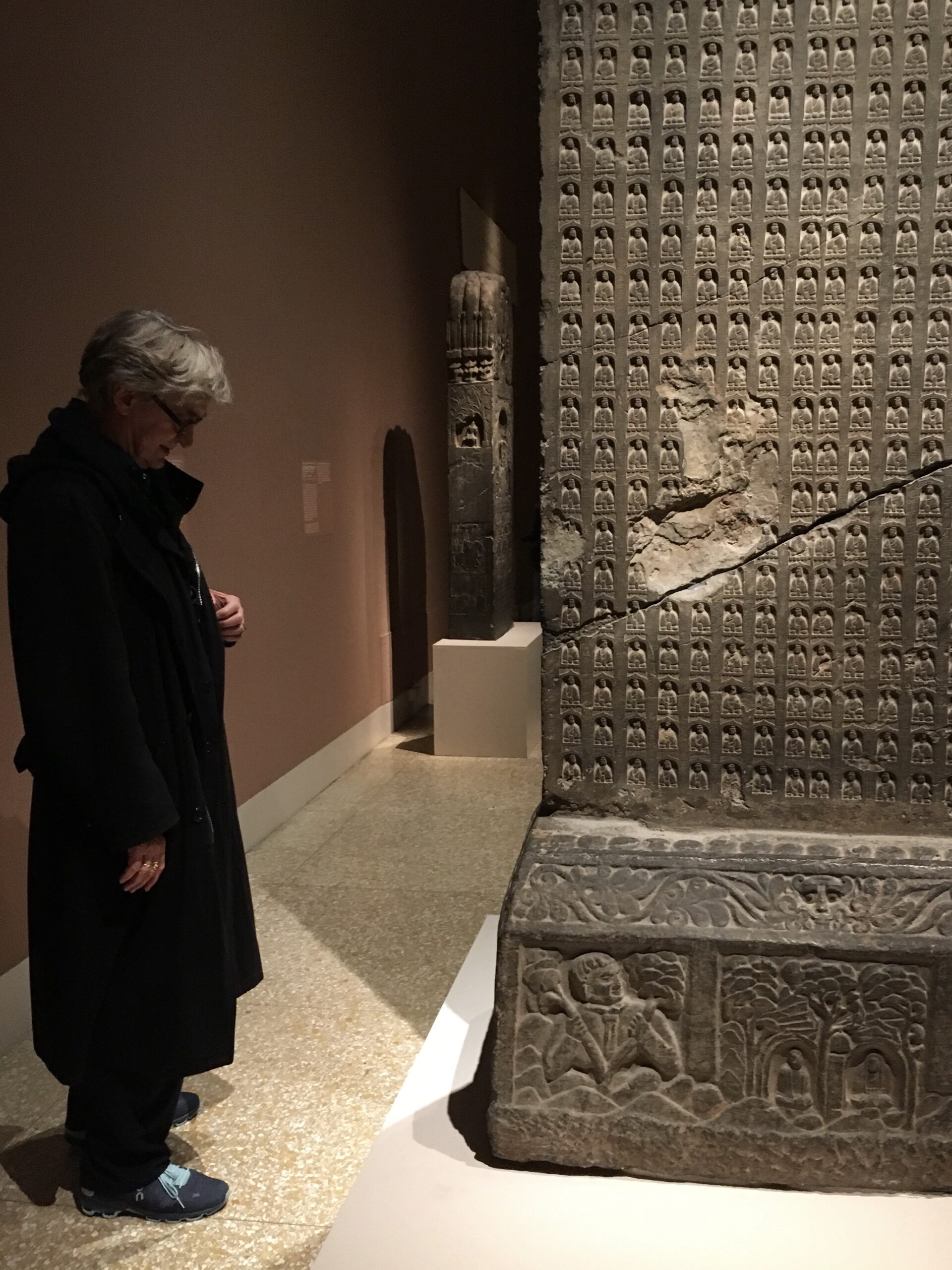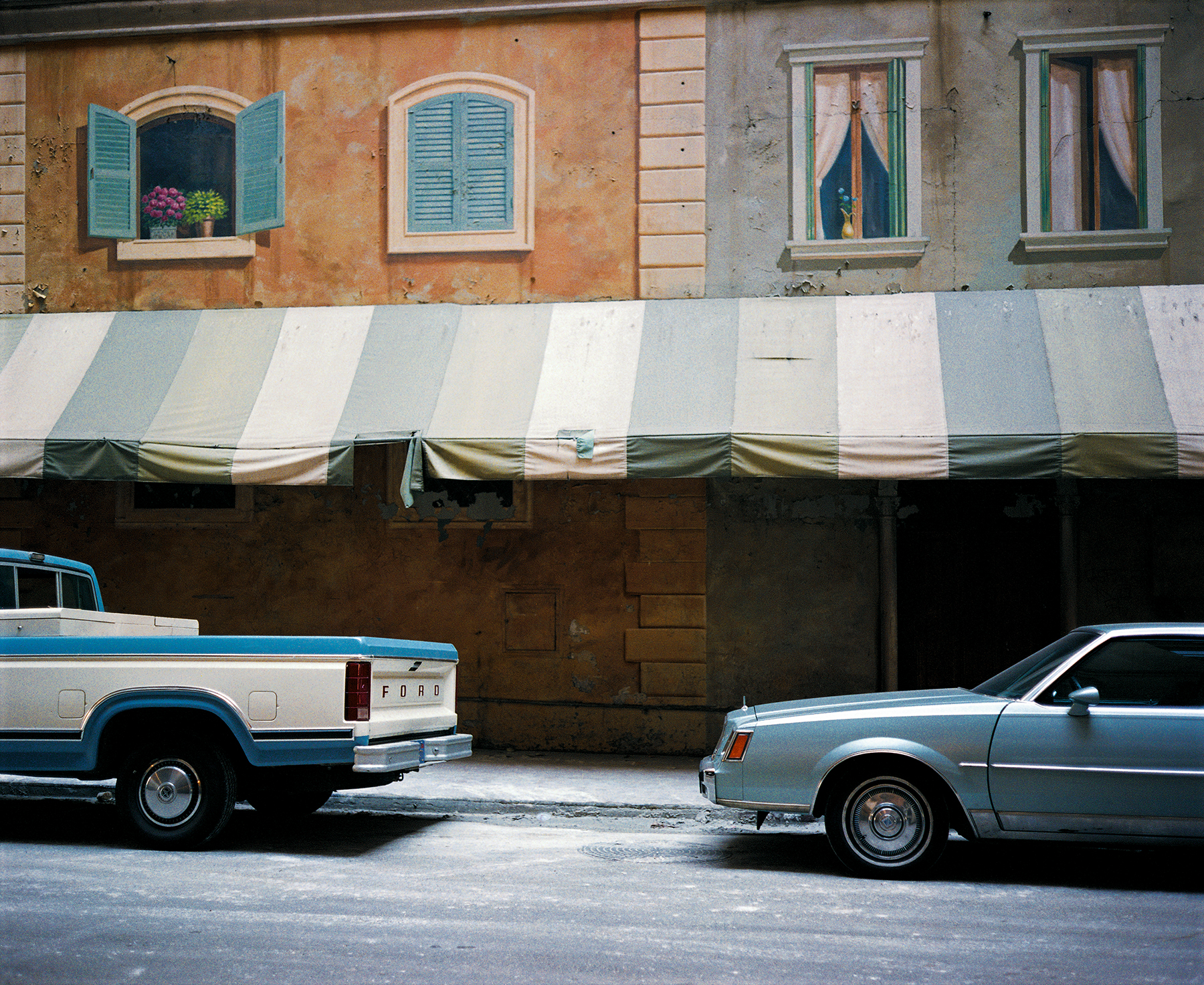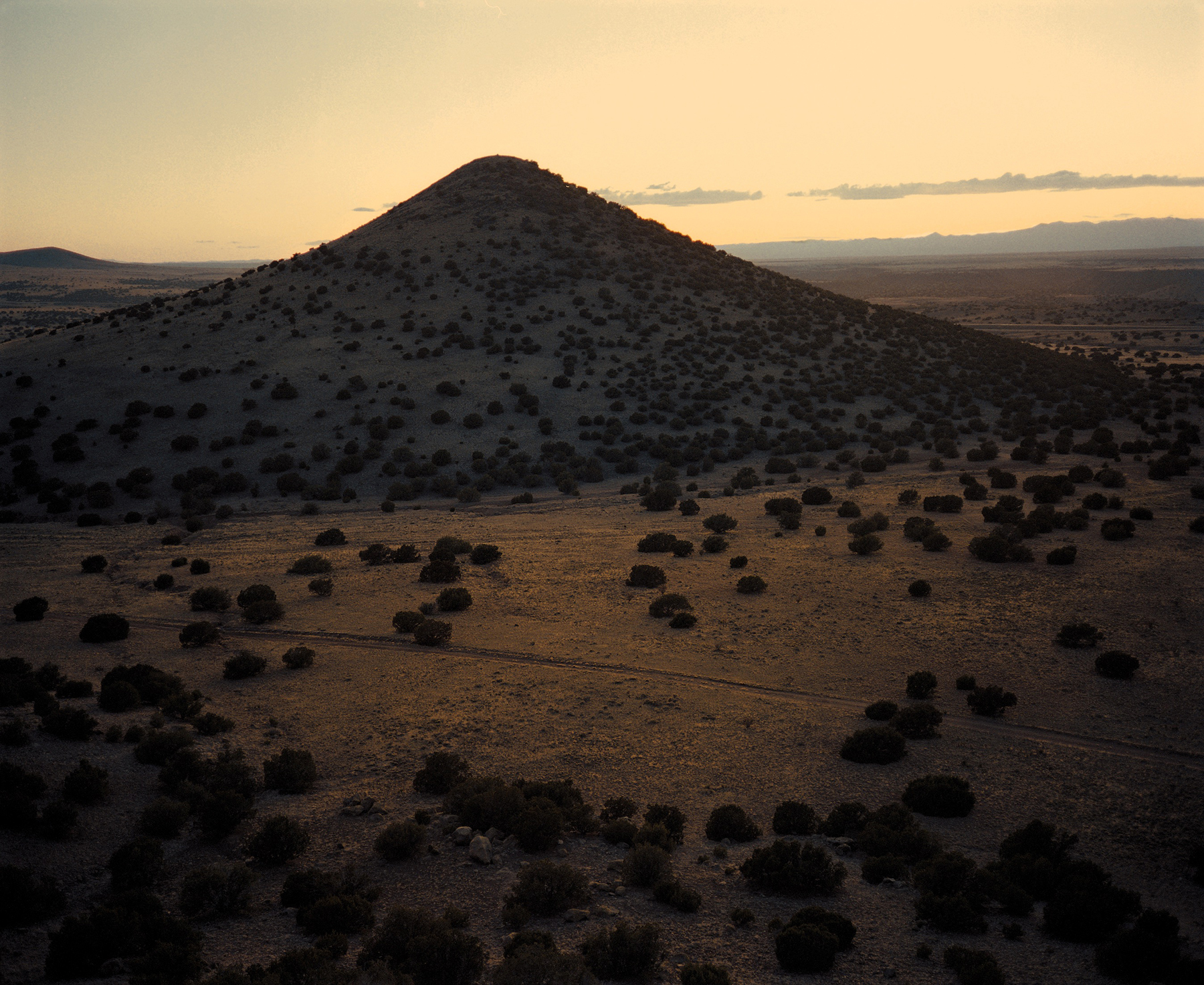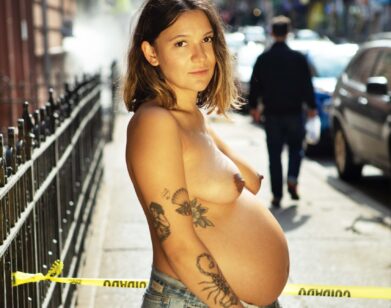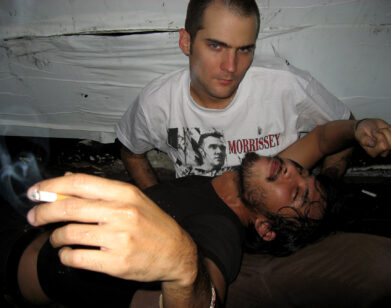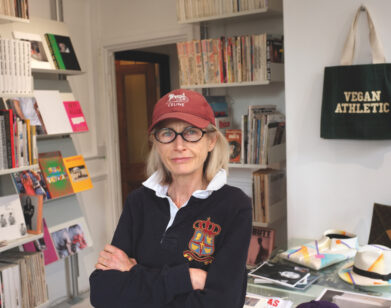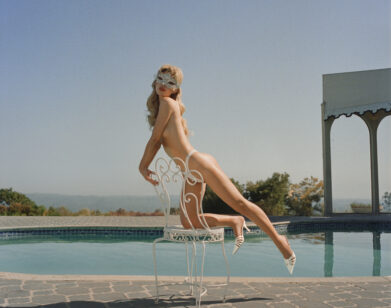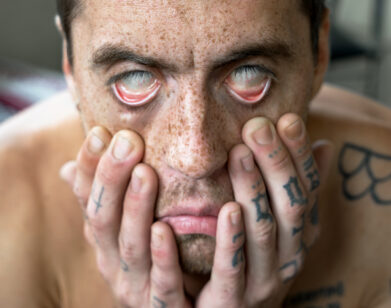ICON
“I Need Places to Tell a Story”: Wim Wenders, in Conversation with Michael Almereyda
When Beyoncé dropped the teaser video for Act II of Renaissance on Sunday night, you probably caught her not-so-subtle reference to Paris, Texas, a near dead-on recreation of the scene where Harry Dean Stanton, wearing a dusted pinstriped suit, gazes ahead as the desert looms large behind him. It is a testament to not only the enduring influence of director Wim Wenders, one of the greatest filmmakers of the 20th century, but his intuitive sense of composition, which has resulted in some of the most remarkable images ever committed to celluloid. At 78 years old, it has been a busy few years for Wenders, who released two films in 2023: the feature Perfect Days, which is nominated for Best International Film at next month’s Academy Awards, and the 3D documentary Anselm, a mysterious immersion into the work of the German painter Anselm Kiefer.
Simultaneously, Wenders lifelong photography practice has come under renewed consideration, as the Howard Greenberg Gallery exhibited an exclusive selection of the director’s Cibachrome prints in Paris in November. Wenders began to take photography more seriously when, while shooting Tokyo-Ga, he happened upon a Plaubel Makina in a used-camera store in Tokyo. While surveying locations for Paris, Texas, he brought the camera with him, refining his practice so he could better understand the light in the American West. “I got used to framing without hesitation and I didn’t fuck around long,” he says. “My arm knew where it had to go.” Last month, from his hotel room at The Sunset Marquis in Los Angeles, Wenders and his longtime friend, the director Michael Almereyda, got on Zoom to have a wide-ranging conversation about photography, Perfect Days, the pleasures of taking pictures in museums across the world, and the time Wenders scaled a mountain in Austria with Anselm Kiefer (who, fearful of an imminent lightning strike, abandoned the filmmaker and booked it in search of safer ground).
———
WIM WENDERS: Hey, Michael. So we’re both white now.
MICHAEL ALMEREYDA: I think we’ve always been white, so to speak.
WENDERS: White-haired, I mean.
ALMEREYDA: White-haired, yes. Here we are. I can’t help but think about the time we traveled together, but it almost makes sense that I’m in a hotel room and you’re in a hotel room.
WENDERS: I’m in a hotel where I first stayed in 1973. The Sunset Marquis was not fancy at the time. It was totally rock and roll and all the bands stayed here—The Ramones, The Clash. And now they made it quite fancy.
ALMEREYDA: Well, I’m routinely unprepared, so I tried to do some homework before I flew in because I’m here on a documentary shoot. I grabbed a book on the shelf that might be familiar to you. It’s called Book of Changes, in which you were interviewed by Kristine McKenna. Do you remember what you talked about?
WENDERS: No. It’s a bliss to forget interviews.
ALMEREYDA: It’s focused on photography. You talk about needing to be alone when you photograph, and how different that is from movies, even though they share the same DNA. Maybe we can talk a little bit about how you started taking photographs.
WENDERS: I started before I even knew it was called photography. My father was a photography freak and always took pictures. When I was little, he more or less had to give it up because he was a doctor, a surgeon, and he didn’t have any time. He gave me a camera before I went to school. It was a plastic camera, about a six by six, because that was regular at the time, and you had to look down from above. It was really cheap. All my pictures were crooked. I took pictures of animals more than anything else. I was encouraged to take pictures of family, but obviously I didn’t want to.
ALMEREYDA: Obviously? What do you mean?
WENDERS: Because there were none.
ALMEREYDA: I see.
WENDERS: And if there was one, it was listless and crooked and out of focus. That camera was then exchanged and I had a 35 millimeter, also a cheap camera, but it was a camera that you could put to your eyes. I still have my contact sheets from the time, and my photography got much better when I could lift the camera to the eye. It wasn’t art, it wasn’t anything, it was just something I thought was fantastic and I liked it. I just had the gene from my father. And later on, when I graduated, he gave me his Leica, so that was a much bigger education. None of the other kids had cameras, so on all the excursions—I was with the Boy Scouts—I was the one who had to take all the pictures of raising the tents and of all this stuff that you do as a kid. I don’t have any prints from the time, I only have contact sheets. I didn’t have money to make prints, so I was happy to have the contact sheets, lots and lots of contact sheets, and for me, the act of photography was obviously more meaningful than having prints.
ALMEREYDA: There’s a new book coming out that I co-edited of Garry Winogrand’s color photographs. My friend and I went through 45,000 slides that were archived in Tucson, Arizona and almost none of them had been published or seen by anyone. So this impulse to shoot is not necessarily yours alone, but it is a different impulse than feeling like you need to share these pictures.
WENDERS: It is a different impulse, and I only learned that much, much later. I don’t know if you become a photographer when you take pictures consciously or when you start printing them. I started to take photography more seriously when I was in Tokyo with Ed Lachman shooting Tokyo-Ga. On the last day of shooting, there was a used camera store close to our hotel and they had a Plaubel Makina. It cost more than a thousand dollars, even if it was a historic camera from the sixties. Then, on the last day, I bought it because I was going back to America to do location survey for Paris, Texas. That was the only camera I took with me. It was six-by-seven, it was a beautiful format. I started using color negatives for the very first time in mid-size and that was a great exercise in framing. That was really the purpose of my trip. I wanted to get ready for the West and understand its light and not be afraid of its primary Kodachrome colors. I took shitloads of photographs and, again, did not print them until later when Paris, Texas came out. And somebody said, “We heard you took lots of photographs in preparation.” I said, “Yes, I did.” And they said, “Can we see some?” And then I started to print. That moment when I printed from my first midsize color negatives, I realized, yes, photography is something that has to do with the fact that you make a print and you give it to somebody and you share it. There’s lots of photographers in history who didn’t really share their prints until after they were dead. There’s huge photo libraries of people who never printed in their lifetime, I guess they were still photographers. But they only become a photographer if other people can see those pictures. I was very, very happy with my color photography of Paris, Texas. I got used to framing without hesitation and I didn’t fuck around long. My arm knew where it had to go. I became so good with that format and that camera that my body knew how to take the pictures. I knew it from painting, where the frame had to be and where the horizon had to sit.
ALMEREYDA: But of course, it’s very aligned with your picture-making in movies. You’ve always had a signature clean, sober style. I want to loop back, though, because you’re acting like the history of photography for you began in the eighties. When I think of Alice in the Cities, one of your early great films where Rudiger Vogler plays a rather hapless writer who resorts to relentlessly taking Polaroids, that act of taking a picture and his connection to the world through photography is very poignant. These dominoes are falling in my head as I think of these threads. Now you have a beautiful book of your Polaroids and they’ve been restored and presented in larger than life–
WENDERS: But only to tell stories, only to tell stories. I even say it in the foreword: they were not photography, it was pre-photography. It was a strange, short time in history where there was a strange premonition of digital photography. Polaroids are a weird premonition of what we all now do with our iPhones. It’s a beautiful last hoorah for analog pictures. It’s through the Polaroids that I slowly understood what places meant to me in the process of filmmaking, how dependent I was on places, and how much I needed places to tell a story. In the end, I became a photographer of places.
ALMEREYDA: Well, it’s a fascinating distinction, and it may be a matter of semantics we don’t have to dwell on. Some people would argue that Polaroids are photography, but for you, they were part of that process. Robby Muller’s Polaroids have become very well known and very celebrated.
WENDERS: Robby’s Polaroids are more photography. You can see it in his framing, and you can also see that he took lots of pictures until he had it right. That I didn’t really do. I love his Polaroids, I own a couple because I bought some and Robby gave me some at some point.
ALMEREYDA: Have you seen Tarkovsky’s Polaroids?
WENDERS: Oh yes, there’s a very precious little book that I love. They are products on their own, not means to get to a movie.
ALMEREYDA: You say something revealing in your Kristine McKenna interview from decades ago. You talk about realizing that, when you were taking photographs in the American landscape, there’d be language, there’d be signs, there’d be words almost inescapably, and that became part of the texture of the place. Can you talk about that a little bit more?
WENDERS: I was very much attracted to signs in the American West. I love that very, very much in Walker Evans’ photography, where there’s also a great attraction to the physical existence of letters and words and billboards and stuff. Robby and I really loved Walker Evans. When we did Kings of the Road, we did lots of black and white Polaroids and we were very much attracted to anything that had signs or corrugated iron in it.
ALMEREYDA: If we slide into the present, you’ve had a pretty amazing emergence from the pandemic with two films that are both remarkable and remarkably different from each other. One is a fictional portrait of a humble man in Tokyo who cleans toilets, and one is a portrait of a hugely ambitious and famous artist who doesn’t clean toilets. But they’re both photographers, both pretty self-contained and solitary men. Can you talk about how that links them and separates them.
WENDERS: For me, it was quite a discovery when I started to shoot in Anselm [Kiefer’s] studio to realize that, when he is starting a painting, it’s all photography-based. Almost all of his paintings start with a photograph and he uses projection to throw the images on the screen and engrave the shapes or the horizon line or the outlines of things. He took enormous amounts of landscape photos and he still uses them even today as the basis of his work. And we traveled together once, that’s not in the film, because we met each other in a little town in Austria by chance. Then we decided to climb a mountain together, even if we could have taken a gondola, but we decided to walk. Whenever there were herds of cows, he climbed the fences and took pictures of cows. He always ran among herds of cows and sometimes they were nice and sometimes they were a little hostile. He took hundreds of pictures of cows, such that we didn’t make good progress getting up the mountain. And later, some of these cows appeared in an old series of paintings. We finally made it to the top and then there was this big thunderstorm coming up on the horizon. Anselm got very scared that we were going to be easy victims for lightning, so he started to run down the hill. Anyway, of course Hirayama [the protagonist of Perfect Days] takes photographs, but on a very different level.
ALMEREYDA: Right. It feels very different how photographs function in the two movies, and it’s fascinating. Maybe we can contrast them by saying that there’s a quality of everydayness that’s celebrated in Perfect Days. I wondered if there’s a German word for that.
WENDERS: It’s the same word, alltäglichkeit.
ALMEREYDA: And that’s been a big theme for you. But it seems in Anselm, everydayness is absorbed by mythic reality. There’s very little everydayness so much as there’s ritual, routine, action, activity. Part of what I am fascinated about is the movie’s opacity.
WENDERS: It was slightly mind-blowing to go from one to the other. But luckily, Anselm was finished. I could only shoot Perfect Days because I had handed the picture over to post-production. That would’ve been quite difficult to get together in my head. Anselm has really created his own reality around him. He’s living in a landscape of his own. It’s not connected to the outside world, where Hirayama is very much in the outside world and is living a life of service. Service is deeply depending on the “other.” For Anselm, the “other” is the poet friends he refers to.
ALMEREYDA: How long did it take to make that film?
WENDERS: It took seven shoots over two-and-a-half years and three years of editing. Anselm knew. I told him right away, “I cannot do this in one go,” but I didn’t think it was going to be seven efforts.
ALMEREYDA: Yeah, it’s epic.
WENDERS: It is epic, because I needed to digest every shoot and edit it and look at it and find out what worked and how else we could approach it and what was missing. And then, in Barjac, I realized I needed to see it in a different season as well. We went to the Odenwald, where he worked for 10 years without anybody ever knowing him. He painted in the school building where his wife was a teacher, and she nourished the family.
ALMEREYDA: I like the sense of mystery about the film, in that you’ve made many documentaries and a lot of them are incredibly accessible and enticing. And this one has a lofty… “mystery” is the word I would use. I intend to see it again soon because it just invites you to speculate about how he must have to exist in the world.
WENDERS: If you want his artworks to speak, it is impossible to say too much about the man. You have to really put the life together yourself, because it’s not a biopic in any way. It leaves lots of things unanswered. So does Hirayama’s life.
ALMEREYDA: It felt like your old friend [Yasujirō] Ozu. There is a weight of tradition, a past that wounded him. He’s still enjoying the small things in life.
WENDERS: Family is important.
ALMEREYDA: Tethering, yeah.
WENDERS: These are typical characters in an Ozu movie, sisters and brothers. Parents are only being talked about, but it’s almost like you see a whole life suddenly emerging with the father-son conflict. Anyway, you catch glimpses of a family history and that, of course, is very Ozu-related.
ALMEREYDA: Maybe you can talk about the photographs he takes, which are different from Anselm’s.
WENDERS: Yeah, it’s a whole different idea of photography. It’s more paying respect than it is taking pictures. He is one with these trees and he loves them so much, and light falling through trees, that’s almost his life story. So there are many facets to the film, and they do tie into photography.
ALMEREYDA: I haven’t seen you in three dimensions for a while, but one of the last times was before the pandemic when we went to the Metropolitan Museum and saw the familiar Dutch paintings and then kind of got lost in the Chinese art section. There was a moment when we were in front of a big monolithic stone. It’s about 20-feet tall, and it had these repeating pictures of a human head morphing. The wall text explained that this was to show that human identity is unstable or impermanent. Yet it seemed photographic. It reminded me of when you were talking about the Walker Evans photo of the grid.
WENDERS: That was the only corresponding image I could come up with in the modern world to this amazing piece of sculpture. I think I took a picture with you in front of it.
ALMEREYDA: Then we went to the Frick, either that day or later, and no pictures are allowed. It’s a very different experience to be in art and not have that reflex, to have that forbidden. Can you talk a little bit about your experience of photographing art and going to museums?
WENDERS: I love the Frick Collection, it has one of my favorite paintings in the history of humanity. It’s the [Giovanni] Bellini painting of St. Francis being ecstatic. I loved it so much. I ordered it as a very, very expensive art print. I only saw it there for real for the first time. I like the Art Center in Chicago so much because that’s the first museum where you could take pictures of anything. I think being able to walk in a museum and photograph everything you like is a much richer experience. Framing something is such an intense act. Whatever you’ve seen belongs to you in a different way. Now, more museums have gotten used to the idea that it’s stupid to tell people that they’re not allowed to photograph. I love that open spirit of letting people see them and be there in a more satisfying way by being able to take some pictures home with them. I think it’s a natural way to observe art.
ALMEREYDA: John Updike has a story I like a lot called Museums and Women. I haven’t read it for a while, but it has to do with that strange, almost erotic current that goes between what you look at and what you admire at a distance. There’s a different sense of suspense or awakening. There haven’t been that many movies set in museums for good reason, ’cause there’s insurance issues. But I feel like there are heightened moments of my life where I shared these experiences.
WENDERS: Have you seen Submergence?
ALMEREYDA: I remember the movie. What was your experience during that?
WENDERS: One of the first scenes is a scene in a museum in front of a Caspar David Friedrich. It’s really a scene of secret agents moving in front of a Caspar David Friedrich. I just wanted to throw that in.
ALMEREYDA: At the Picasso exhibition I saw today at the Pompidou there were three very beautiful drawings that you couldn’t photograph. It’s a mysterious thing that we got so used to being able to absorb and claim pictures. They’re a record of impermanence, because they can last longer than the thing they’re recording.
WENDERS: They do.
ALMEREYDA: They’re kind of fragile, as are movies. Having had this busy time, are you able to relax? Or are you stepping into another epic?
WENDERS: I’ve started a film five years ago and we’re still shooting it, we still have the bulk of the film to do. It’s a film about an architect, Peter Zumthor. It’s partly to be shot in L.A., because he’s now building the new LACMA. But we also shoot other buildings that he’s doing right now and basically everything he has done already. He’s sort of the architect’s architect. Every architect I know says, “In a different life I want to be Peter Zumthor, because he sticks to his guns and only builds what he really thinks is necessary.” He thinks a lot of buildings are just not necessary. He built a couple of beautiful churches and chapels and he was asked to build a chapel in Seoul, on a beautiful hill that belonged to the Catholic Church. He went there and he loved the hill and the trees there. But he said to them, “Guys, why do you need a chapel?”
ALMEREYDA: “Leave it alone,” yeah.
WENDERS: He talked them out of the chapel and talked them into a tea house, and now they’re jubilant that they have this tea house. They realize he was right. He totally puts into question the purpose of the building. If he doesn’t understand the purpose and what it is good for, he says, “I can’t build it.” He lost a lot of jobs because he was questioning the necessity or questioning the use.
ALMEREYDA: Do you know how you’re going to structure the film?
WENDERS: Well, part of the idea was to shoot in places before there was anything and then see him conceive it and wait until it’s built and shoot the same place, but with the building. That’s why it’s such a long-term project. Architecture takes longer than movies.
ALMEREYDA: It’s almost like a Beckett version of architecture.
WENDERS: Yes, it is. It’s asking for a lot of patience. But he’s an extraordinary man. He’s sort of the exemplary architect because he asked the question that basically I think every architect should ask themselves, even if they don’t.
ALMEREYDA: Do you have any feelings about Tadao Ando? You spend a lot of time in Japan.
WENDERS: Yes, Tadao is a very old friend. I met him in Osaka, back when he had only built in the Osaka area. I went there because I had seen a picture of the Church of Light that he built.
ALMEREYDA: That’s the concrete with the open cross?
WENDERS: Yes, where the only window is the cross. I was really taken by that idea. And I knocked at his door and he opened it himself. And we liked each other. Then he took time out, just simply left his office, and showed me all the stuff he had built in the area. We’ve known each other now for 30 years.
ALMEREYDA: I’m entranced by the buildings, but I’ve only seen them in books. He has very few buildings in the U.S.
WENDERS: He built a beautiful museum in Dallas-Fort Worth. Then there’s the museum on the island. He’s really a very precious architect and a totally fun guy. I mean, you are with him for a minute and you’re laughing because he cracks one joke after another. Did you know that he’s a boxer? He’s a self-taught man.
ALMEREYDA: I knew that he was a truck driver and a boxer. That’s part of the mythic fun of him. I’m jealous, I didn’t know you had this relationship.
WENDERS: When he opened the door in Osaka, he was a young architect. He had the physics of a boxer, but now he’s much more refined.
ALMEREYDA: You weren’t tempted to make a movie on him?
WENDERS: No, I just wanted to make a movie on one architect.
ALMEREYDA: One at a time. But I wish someone would make the Ando movie. I’m in love with what he does and I’d like to know more.
WENDERS: The Ando toilet in our film is the one where his niece photographs him cleaning the toilet and where the school girl comes in and drops her iPhone. She looks at her uncle and it slowly dawns on her who he really is. That little scene is shot inside the Tadao Ando toilet.
ALMEREYDA: So you have collaborated with him after all.
WENDERS: A little bit, in his smallest building. I don’t think he did anything smaller than that toilet.
ALMEREYDA: Has anyone offered to do a remake, as they did with Wings of Desire? You could just set it in Los Angeles with Nicolas Cage.
WENDERS: Yeah, I could. He would have to have a strange profession now.
ALMEREYDA: No, he’d still be the toilet cleaner.
WENDERS: I don’t think they have any decent toilets here.
ALMEREYDA: If you get any offers, we can do that.
WENDERS: Nicolas Cage is a good guy. He was very sweet. He was offered to play the part in City of Angels and he called me and said, “Wim, I love this movie so much and I’m so much in awe of Bruno Ganz in it. I only want to do this if you’re fine with it.” Of course I was fine, because I thought the director [Brad Silberling] was a cool guy and he made a good effort.
ALMEREYDA: Do you have any plans for other fiction features?
WENDERS: Well, I have the one that I’ve been working on now for five years. It’s a big, monumental science fiction film. Oh god, it’s going to take forever. It’s on the idea of peace and it’s called Peace by Peace.
ALMEREYDA: Do you have Bill Evans’s “Peace Piece” in it?
WENDERS: No way to not have it. It’s one of the holiest pieces of music and the idea of peace is so present in it. I’m in awe.
ALMEREYDA: I was only joking, I had no idea it was so sacred to you.
WENDERS: It is.
ALMEREYDA: I think it’s magnificent.
WENDERS: This is a monumental piece of music. I would love to have it, but I first have to make the movie. I realized that in making a film about peace, the epic of peace can only exist if it doesn’t have to prove that it’s the opposite of war. In that future that I’m intending to create in the film, war is long gone.

